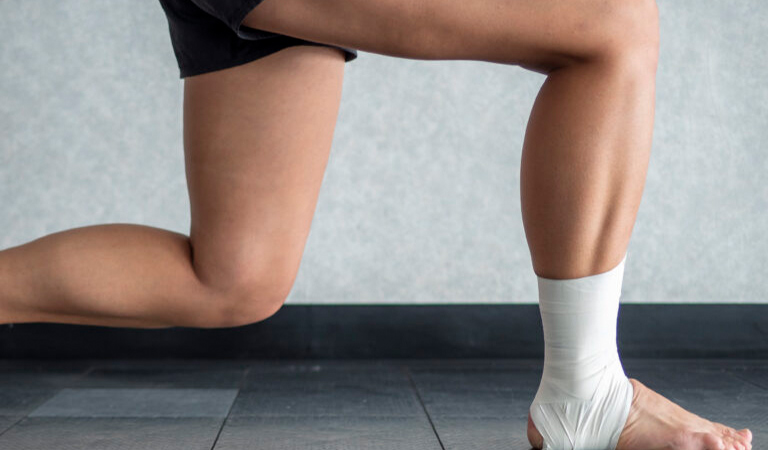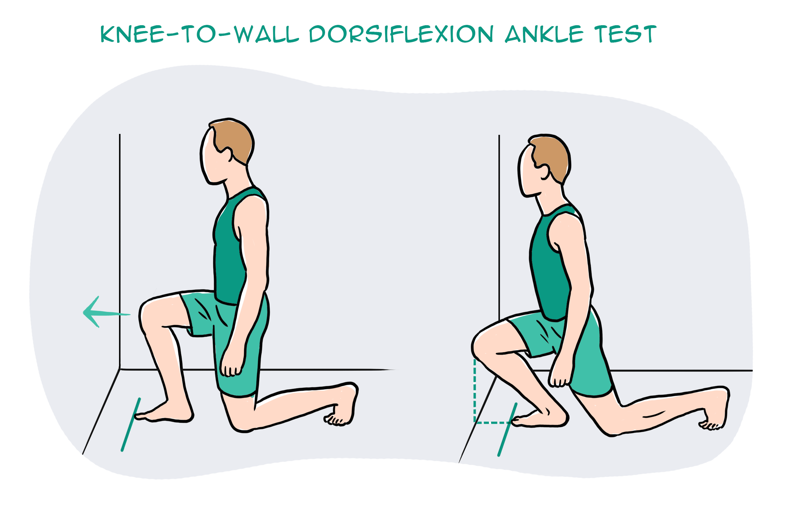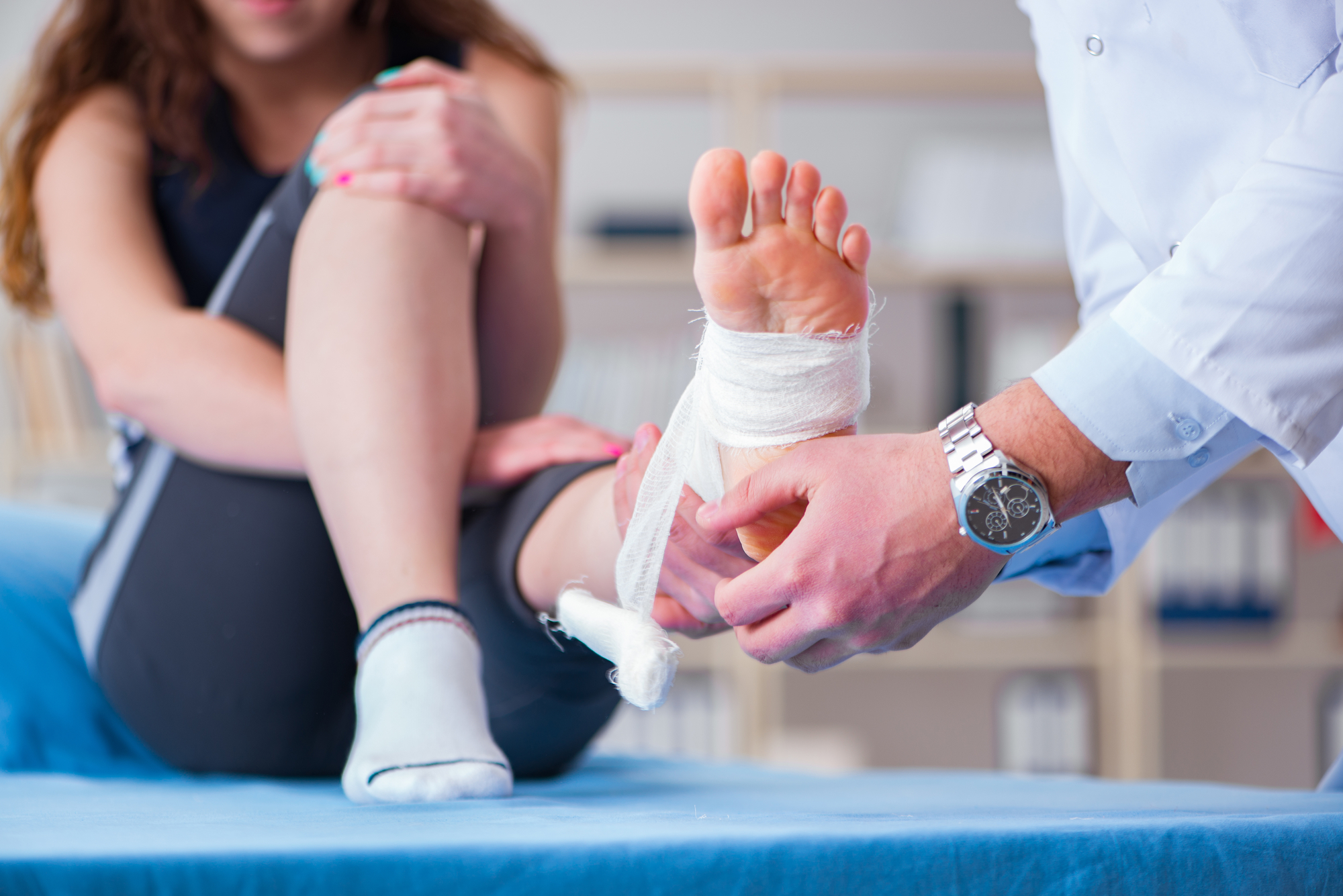
How do I know I have an ankle mobility issue?
You may know you have an ankle mobility issue if you have chronic/pain injuries in your foot, ankle or knee with no known injury. You have no clue where this pain is coming from, you just know that when you start doing a certain activity your foot, ankle, or knee just starts hurting.
It always happens:
- You rest it.
- You ice it.
- You back off your activity.
- It feels better so you begin to lift, run or workout again and your pain comes back.
Another way to see if you have poor ankle mobility is if you cant reach the bottom of a squat; you feel like you are going to fall backwards if you squat too deep or your knees go well passed your toes (within reason) in the bottom of a squat.
Finally, you may have ankle mobility issues if you have tremendous calf pain/tightness most of the time or obtain stress fractures in your feet on a common occurrence.
Ankle Mobility Test
You would be surprised to know that if you increased your ankle mobility a lot of your pain may decrease or vanish all at once.
Let’s just do a quick assessment: Take a knee and place your toes 6 inches away from the wall. Lean forward and try to touch your knee to the wall without your heel coming up off the ground. If you can not get to the wall with your knee you might have poor mobility in your ankle.

Photo from braceaccess.com
How did I get bad mobility to begin with?
- Walking in high heels daily.
- Excessive running/cutting on toes (Sports like Basketball, Track and Tennis).
- Calves/soleus are stronger than anterior tibialis (shin muscle).
- The ankle joint itself may be locked and offers little to zero motion.
The importance of proper ankle mobility
We went over that you might have issues reaching the bottom of a squat without falling backwards, but the big issue is that it leads to injuries. Being an athlete, you might be trained to be on your toes for a long period of time. For example, tennis athletes are trained to be on their toes and keep their feet moving so that they can react faster. There are cross-country runners and track athletes that run on their toes. Some people don’t have issues with this task, but most other people do. It’s a simple posture issue. The calves and soleus are contracting and being used more than the tibialis anterior (small shin muscle). This will cause calf/soleus tightness and will drive ankle into a resting posture that is plantarflexion.
This is an issue because if you do not have enough dorsiflexion at the ankle joint your body will not be able to absorb the stress or shock that the ground causes when you run, jump or plant. Keep in mind that forces felt caused by landing, cutting or planting can be 4-11x your body weight (CES Corrective Exercise Specialist NASM Textbook). If forces or stresses are not absorbed throughout the body and numerous joints then the shock is felt on smaller structures. These smaller structures do not have a foundation to accept that load and these structures will get inflamed or break.
How do I increase my ankle mobility?
TIME AND DEDICATION
A little bit of time each day spent applying some basic ankle mobility stretches before activity can go a long way.
STRETCH and LOOSEN the following structures
- Calves
- Soleus
- The ankle joint itself

STRENGTHEN the following structures
- Tibialis Anterior “bringing toes to your face”
- Heel walks
How to accomplish change with ankle mobility stretches
Spend time on ankle mobility before a workout/practice (STRETCH)
- Heat up the tissue
- Hop on the bike for 5 mins until you get a light sweat or skin is damp
- Foam roll calf/soleus
- Use a stick roller (if applicable)
- 2 mins with no stretch; 2 mins while in calf stretch
- Half kneeling ankle mobility w/ band 2-3 mins (moving back and fourth) (make sure that the knee is NOT collapsing inward. Keep it in-line with the big toe)
- Calf and Soleus Stretch 3×20 secs (Calf stretch-straight leg) (Soleus- bent knee)
- Drive hips to the wall; NOT shoulders
- Calf and Soleus Stretch 3×20 secs (Calf stretch-straight leg) (Soleus- bent knee)
STRENGTHEN the tibialis anterior
- Heel walks (walk on your heels- you should feel good burn.)
- Seated toe lifts. (Take a seat, keep heels on ground, lift toes and forefoot to face.)
- Keep in mind that this can be done while you play your sport or continue to train for whatever it is you do. I WOULD make it a PRIORITY first to stretch or release the tight muscles (calf and soleus) first before anything, then supplement with tibialis anterior strengthening. Once you feel as though the shin is burning and tight while the calf/soleus feel relaxed and loose you will notice a different in your posture, then begin your workout. If you fail to loosen those muscles first and try to just strengthen the weaker muscles you might be fighting against the tight muscles and obtain no progress.
Ricky Braun is a BOC Certified Athletic Trainer and State of Florida Licensed Athletic Trainer. He earned his bachelor’s degree from Appalachian State University before attending Nova Southeastern University where he obtained his master’s degree in health science with a concentration of athletic training. Upon graduation he decided to advance his training and experience and was selected to work as an NFL Athletic Training Intern with the Tampa Bay Buccaneers. He joined Orthopaedic Medical Group of Tampa Bay in June of 2018 and has been working as the Associate Athletic Trainer at Jesuit High School. He works with all Jesuit sports team providing daily injury assessments, treatments, injury screening and on-field emergency coverage. Full Bio




